How to Measure Flour
This post may contain affiliate links. Read the full disclosure here.
How to measure flour the right way for precise, accurate measurements and perfect bakes every time!
Have you ever followed a baking recipe, only for your sugar cookies or muffins to turn out dry, lumpy, or overly chewy? It’s possible that you followed the recipe exactly right. But you might have made one simple mistake: measuring flour the wrong way.
It might sound obvious, but in fact, the way you measure your flour can dramatically impact your final product.
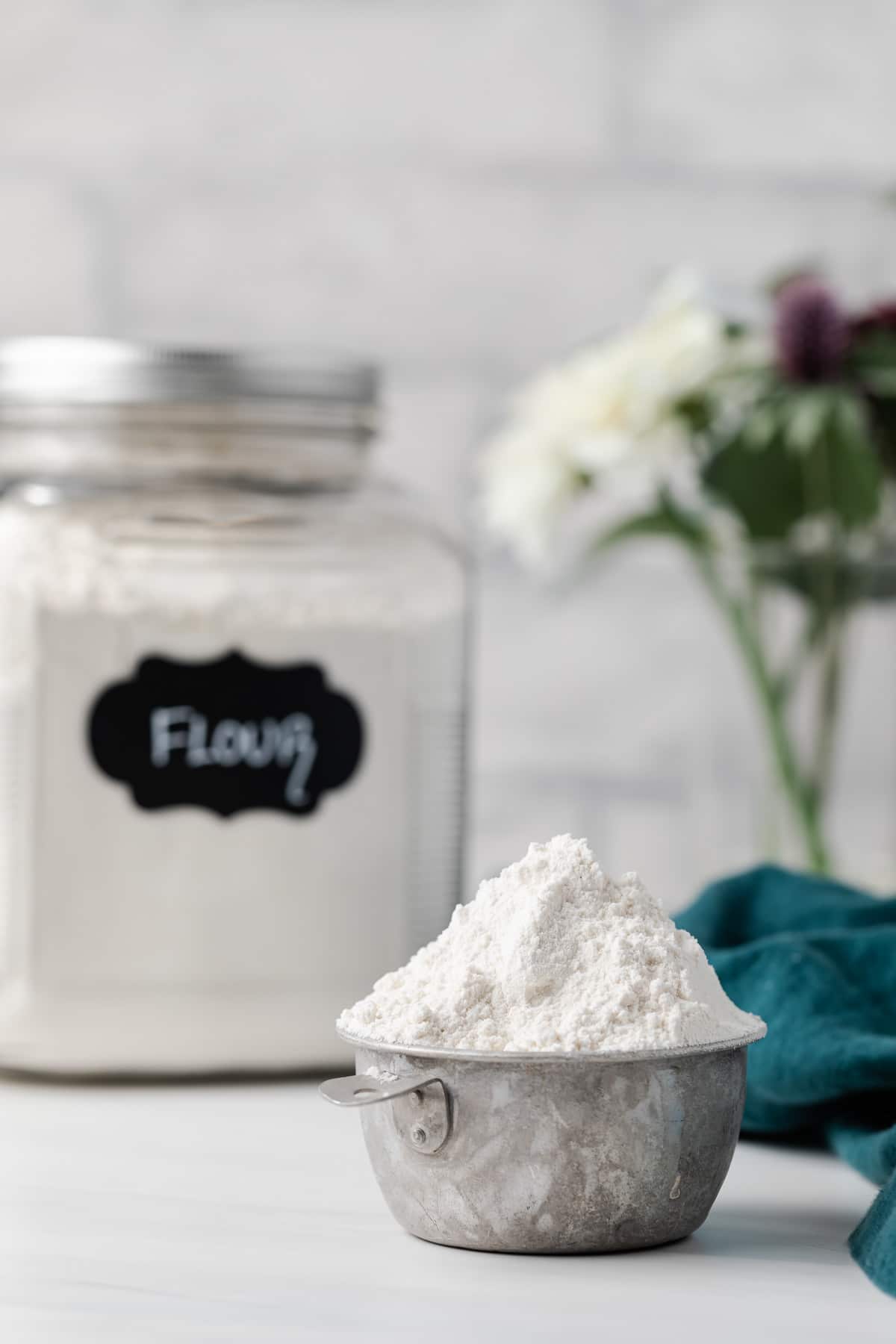
Baking is a science and the ratio of ingredients functions like chemistry. Inaccurate measurements can result in the failure of a recipe. I talk more about the importance of precise measurements in the Baking Fundamentals post.
Today I’m going to teach you everything you need to know about the best way to measure flour for even, reliable baked goods every time.
The Wrong Way to Measure Flour
It’s quite common to simply stick your measuring cup into a bin or bag of flour, level it off roughly, and dump it into your mixing bowl.
However, this method can actually be quite inaccurate. Depending on the weight and kind of flour you’re using, you’re likely to trap a lot of air in your measuring cup. Or, if you pack the flour in, you’ll add much more flour than the recipe really needs.
Flour compacts. A 1-cup measuring cup can hold much more than 130 grams of flour. 130 grams is my standard cup measurement for all-purpose flour.
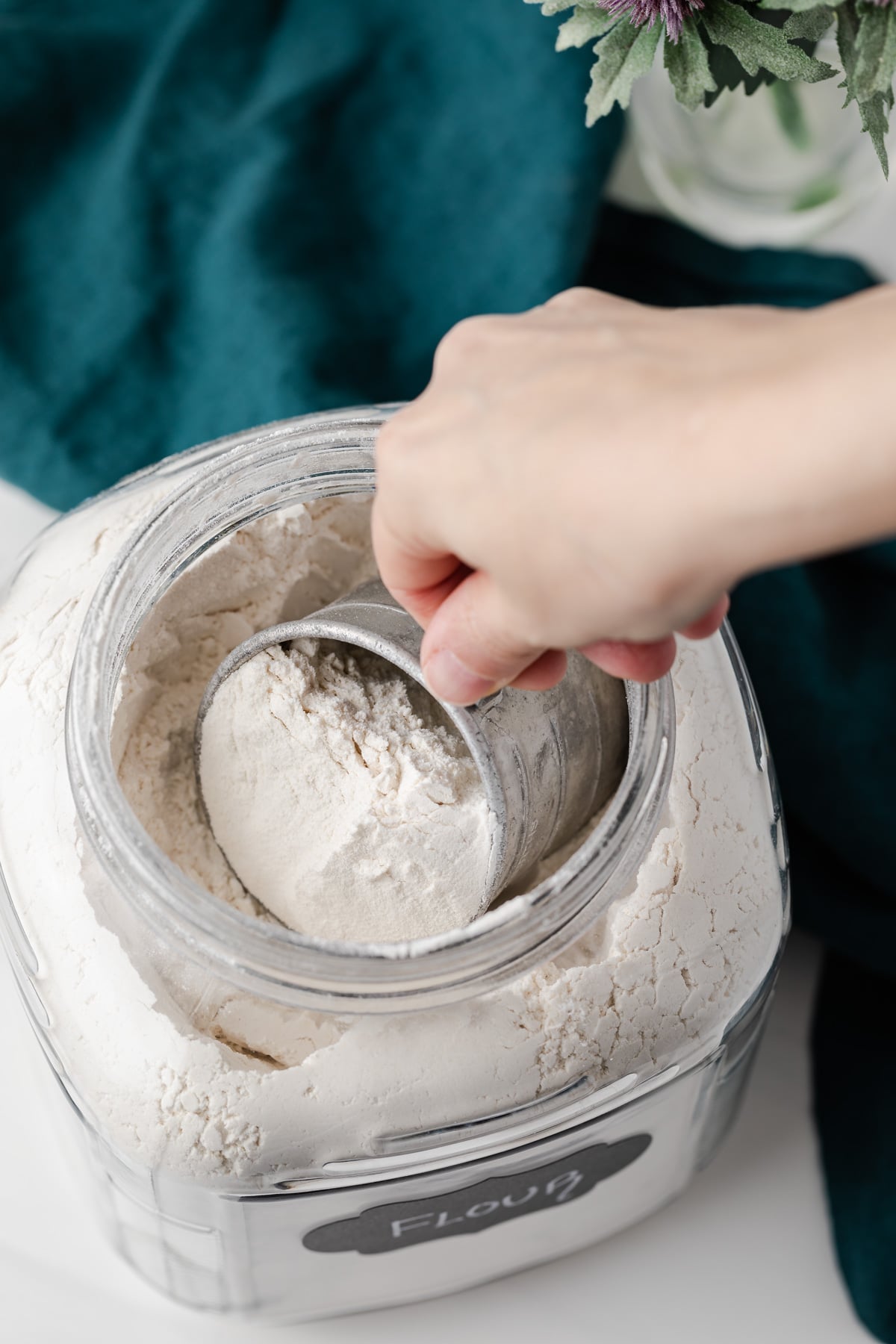
When I weighed the flour that was scooped out with the measuring cup, it was a staggering 150 grams. That’s 20 grams more flour than needed.
As you can see above, the flour that was scooped weighs more (a lot more!) than the properly measured flour on the left.
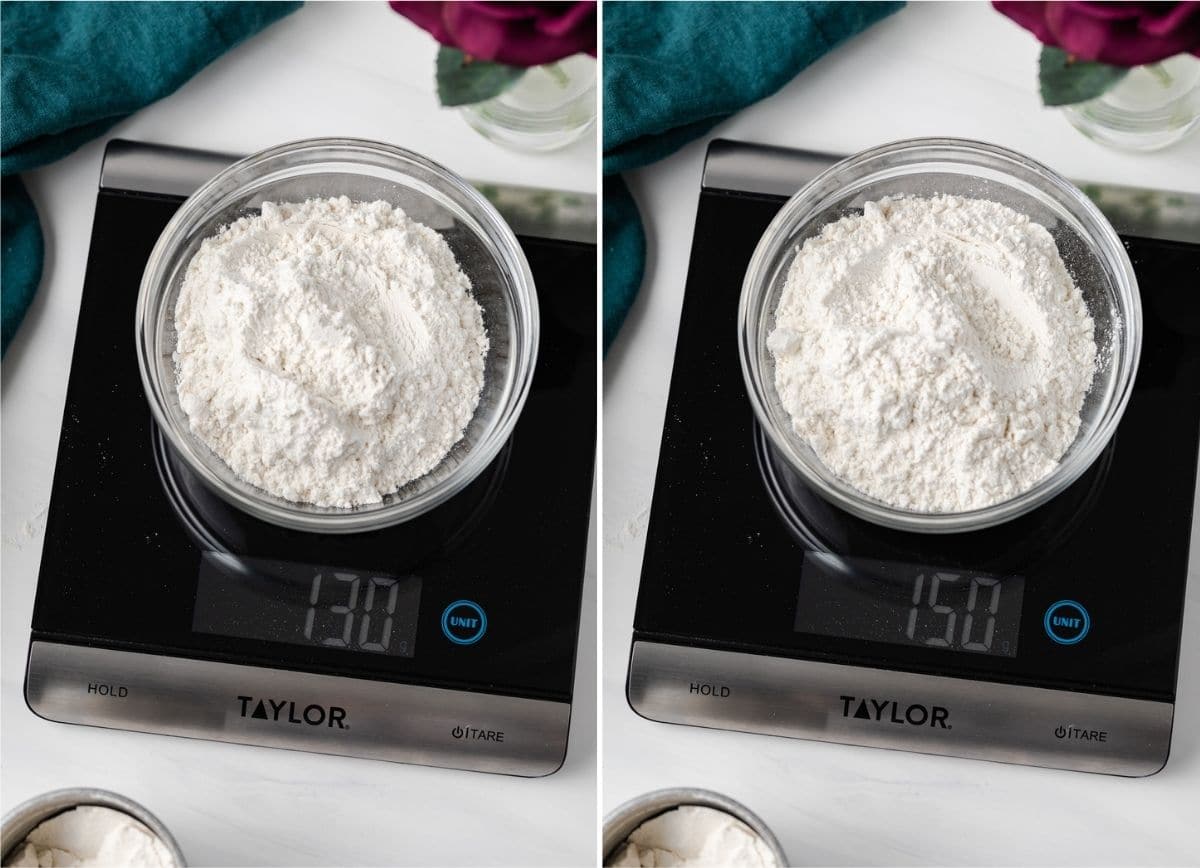
Most recipes call for 2 cups of flour or more. If you were to measure 3 cups of flour using this method, you’d end up with a half cup more flour than needed.
This amount of extra flour will leave you with dry, crumbly cookie dough, cookies that don’t spread during baking, and dense or dry brownies and cakes. Plus some frustration with the recipe not turning out like it was supposed to!
The Right Way to Measure Flour
Let’s focus on all-purpose flour since 95% of all my recipes call for this flour. It’s versatile and can be used in cookies, bread, cakes, brownies, pizza dough… just about anything. You can learn more about other types of flour in my flour basics post.
When I measure all-purpose, I go off the assumption that 1 cup is equal to 130 grams. This is pretty standard, but as I stated above, it can vary with different types, brands of flour, and measuring cups.
The most accurate way to measure flour is to weigh it with a small, inexpensive kitchen scale. You can get them for around $20.
The added benefit of using a scale is you won’t have a ton of measuring cups to clean afterward.
How to measure flour using a scale
When using a scale, there is no need for measuring cups! Simply turn the scale on, place the bowl on the scale, then “tare” or “zero” it so it is not weighing the bowl.
Add the amount of flour you need. “Tare” or “zero” out the scale again then add the amount of the next ingredient. Do this for each ingredient you need to add to the mixing bowl.
How To Measure Flour Without A Scale
So what is the proper way to measure flour for baking if you don’t have a scale? You’ll still need that dry measuring cup, but you won’t use it as a scoop.
Instead, use a spoon or scoop to fluff the flour in your container and fill the measuring cup. The flour should be light and airy, not packed.
Important: the key to perfectly measuring flour is to avoid packing the flour into your measuring cup. That’s how you end up with too much flour and tough, dry baked goods.
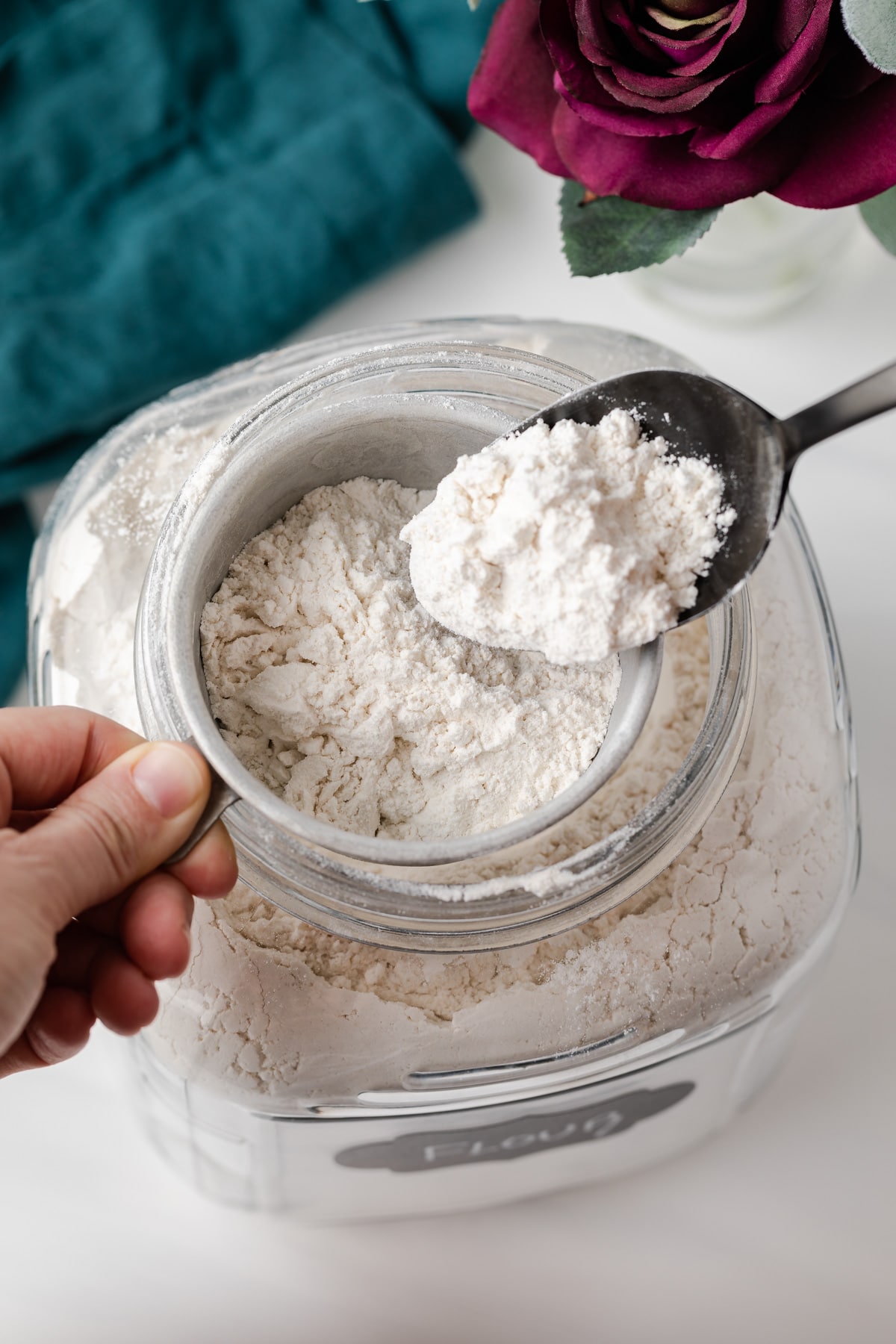
When your measuring cup is full, use a flat surface, like the back of a butter knife, to level it off. Push the excess flour back into your flour container.
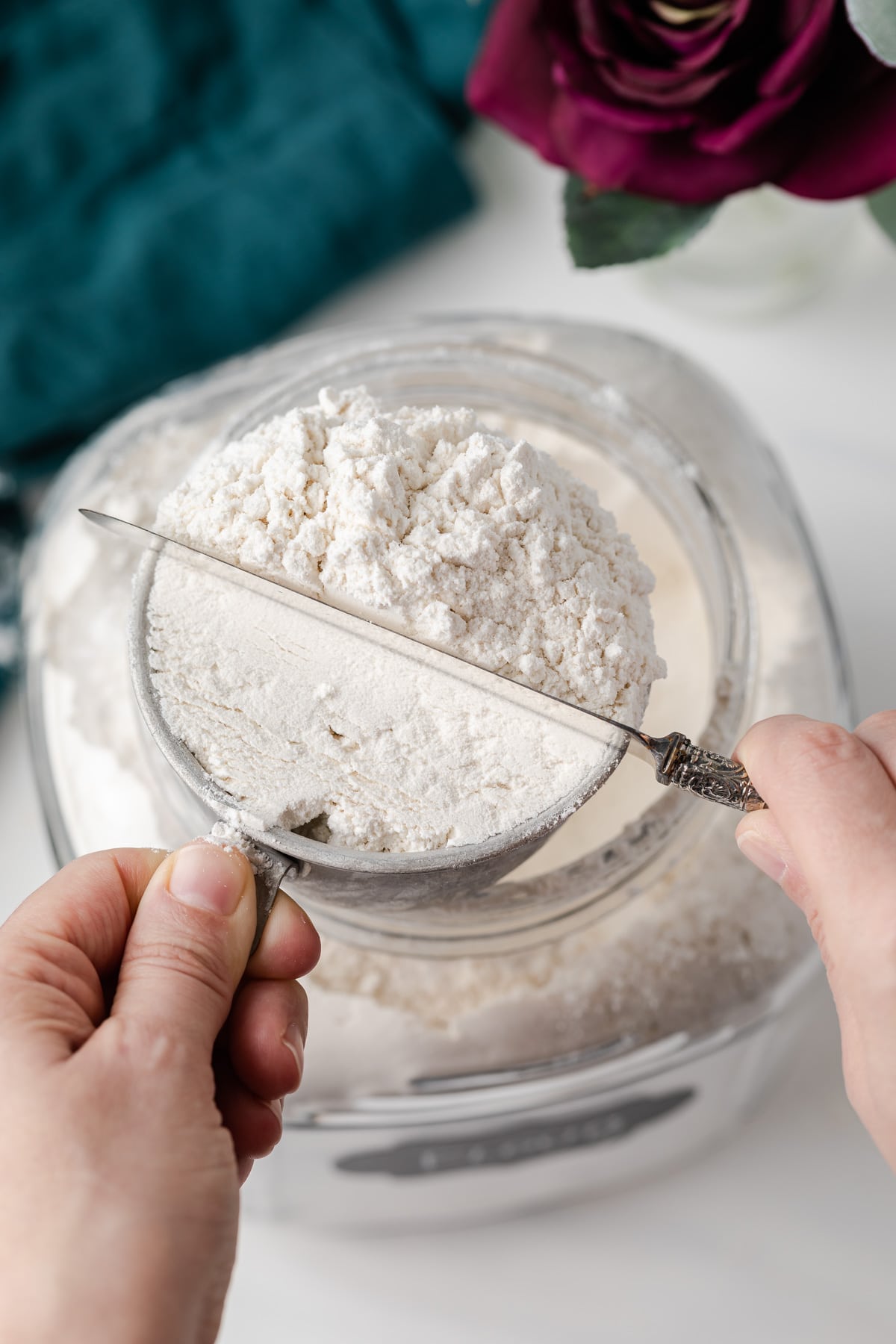
Can you guess how much the flour weighs when it’s measured this way? 130 grams! And that is going to yield the perfect recipe.
However, my cup measurements don’t necessarily weigh as much as the next baker’s. This goes for more than just flour!
If you go by weight measurements rather than cup measurements you know you’re using the exact amount that the recipe calls for.
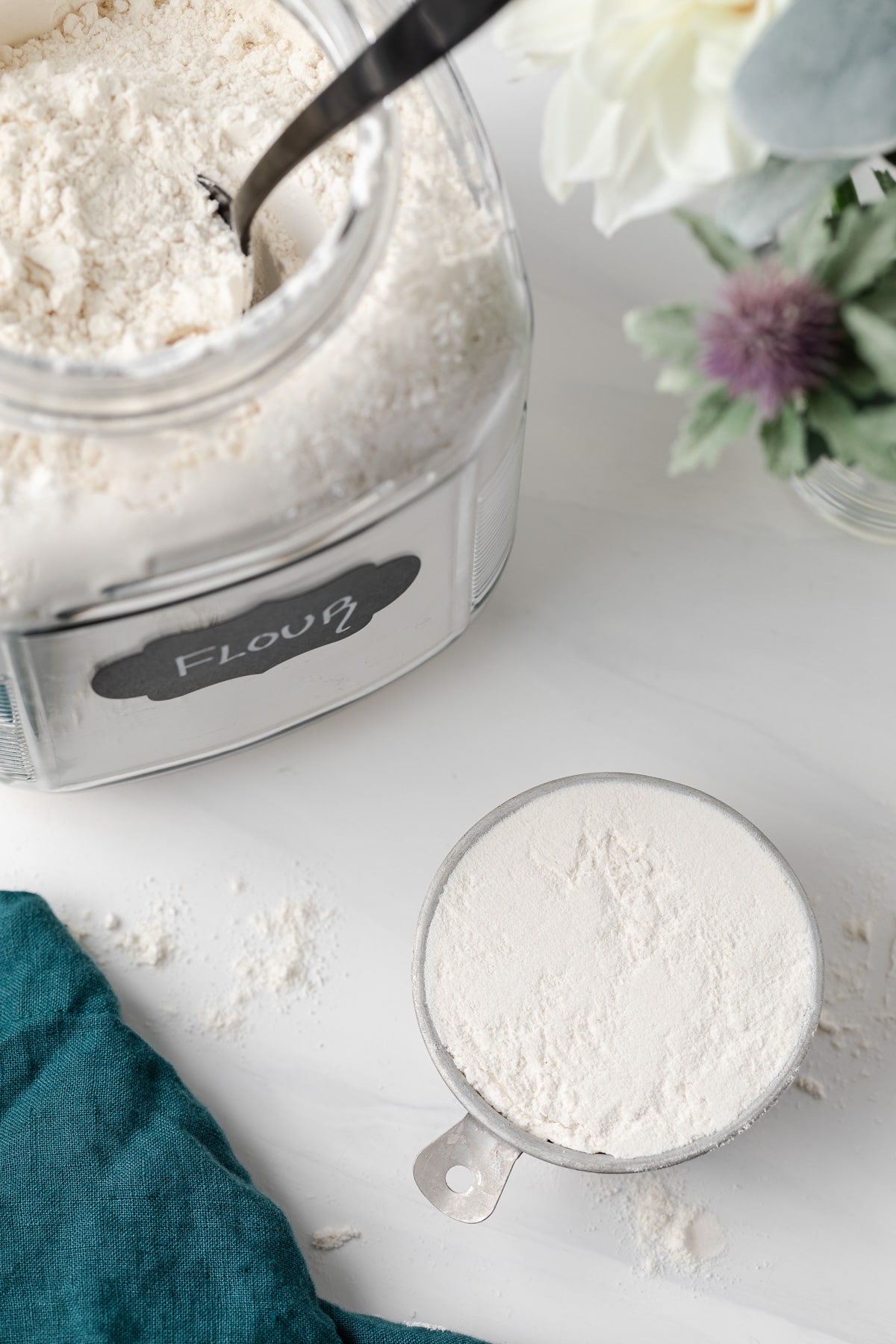
The majority of the recipes on Baked by an Introvert include both cup and weight measurements. Use one measurement or the other! Do not mix measuring techniques as this can yield inaccurate results.

This is so helpful! I have to admit, I rarely use my kitchen scale but I do try to fluff as I go!
Great post! Very helpful, thanks Jen!
yes, exactly how I measure my flour! 🙂 Great tutorial Jen!
Wonderful tips! Before I started my blog, I always measured flour by scooping. When I started researching how to do things properly, this was one of the first things I discovered. I’ve been using the scoop-and-level method ever since! And it TOTALLY makes a difference!
“spoon-and-level”* doy. obviously. 😛
Love this post, Jen! Such great tips on how to measure flour properly – such a life saver when it comes to baking 🙂
Oh, I am SO not a baker…this was definitely a necessary lesson for me. You’re so darn smart! 🙂 Now I need to go drag out my food scale…
Fantastic post! I love seeing something like this, for all to review and learn from. We have been working in the kitchen (mostly baking) with our kids, and this is exactly the type of material that we go over with them throughout the process. Thanks for doing this one!
Thanks for stopping by!
I’ll never forget the day my mama taught me how to measure flour growing up. This tip is a total life saver!!!
This is such good info, Jen! When I’m at school we ONLY use a scale to measure baking ingredients like flour—it’s amazing the difference it makes when you weigh it!
This is such a great post, Jen! I know that I still measure flour the wrong way sometimes, or just don’t measure correctly out of laziness. I love the tips that you provided!